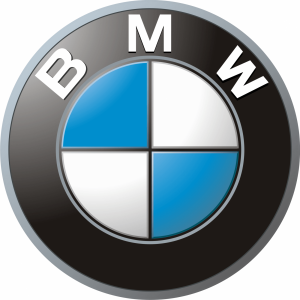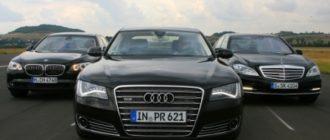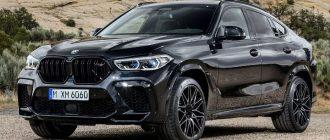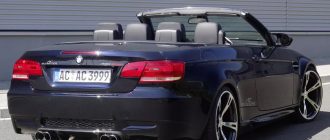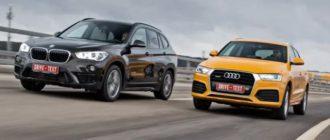- BMW E30 Facelift, 1987
- BMW E30, released in 1986
- BMW E30 Facelift, 1987
- BMW E30, released in 1986
- BMW E30 Facelift, 1987
- BMW E30, released in 1986
- BMW E30 Facelift, 1987
- BMW E30 cars, production of 1985
- BMW E30, released in 1986
- BMW E30 Facelift, 1987
- BMW E30 cars, production of 1985
- BMW E30, released in 1986
- BMW E30 Facelift, 1987
- BMW E30 cars, production of 1985
- BMW E30, released in 1986
- BMW E30 Facelift, 1987
- BMW E30 cars, production of 1985
- BMW E30, released in 1986
- BMW E30 Facelift, 1987
The introduction of the third series of BMW E30 to car enthusiasts took place in 1982, at the car exhibition in the UK. It was in the month of November. Sales of these cars began at the beginning of 1983.
The E30 confidently stepped into its role as the successor to the E21 body types. They are independent models, although they are often referred to as transitional. It just turns out that the shapes of the previous models were angular, and now they have acquired a certain roundness.
Only the engines from the 21 series remained, which were used in the 316 and 316i modifications (from 87 to 88) and in the 318i models. What did the manufacturer offer to car enthusiasts?
What changes did the cars receive:
- Structural body reinforcements were changed.
- The track width of the front and rear suspensions was increased.
- The brake components were strengthened.
- The ergonomics of the cabins were improved.
- All cars, along with the 316, now featured uniform round headlights with a four-system lighting. In the E21 cars, such systems served as an indication of the presence of six-cylinder engines under the hoods.
- The cabins were better heated and ventilated.
- The interior was transformed with the introduction of optional, power-operated mirrors.
- The height-adjustable seats for drivers and front passengers were added.
- Electronic speedometers and indicators for technical maintenance were introduced.
The cars 320i, 323i, 325i operated on six-cylinder engines M20, just like the fives at the same time.
Statistical data indicate that large sales were accounted for by the 320i with M20 engines.
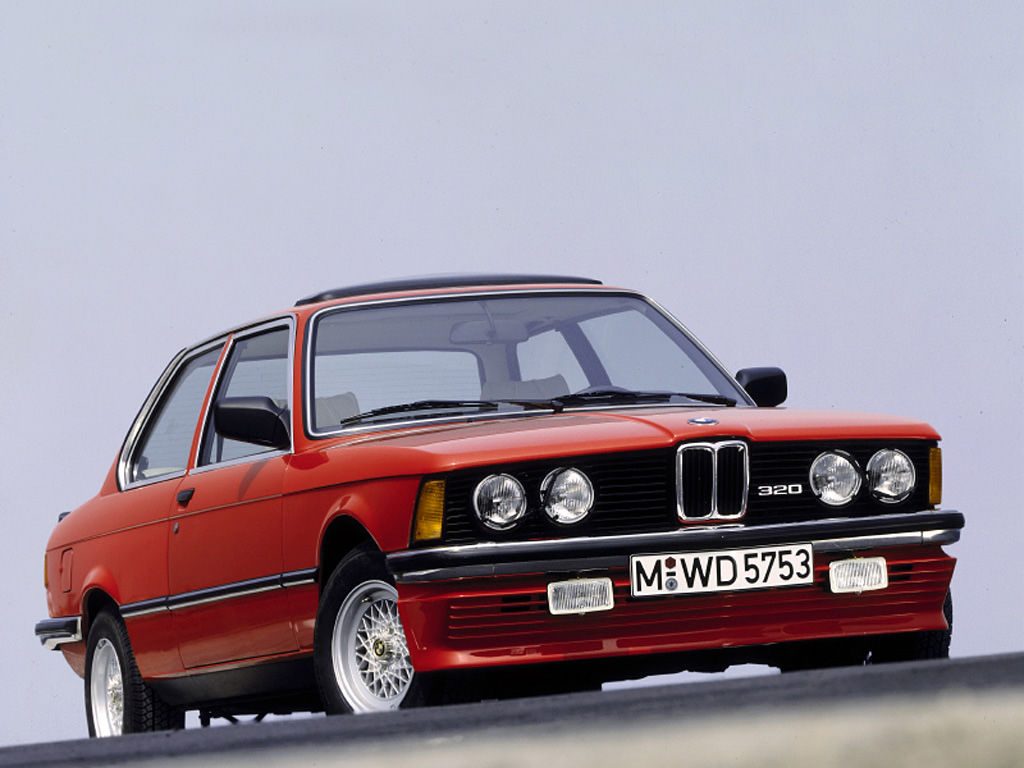
The models 325e were also popular due to their fuel efficiency. The 2.7-liter 27 eta engines were predominantly popular among American and European users.
Tuners also had mixed feelings about these models. Because due to increased compression and revs, the power increased and reached 200 hp.
There were various body types available for the cars:
- Sedans;
- Convertibles;
- Estates.
It was possible to seat 4 passengers in the driver's seat. Because the car parameters were as follows:
- Width — 1680 mm.
- Length — 4345 mm.
- Height — 1370 mm.
- Bumpers were finished with chrome, painted in black shades. Later, they started matching them with paint identical to the bodywork to create a uniform look.
- The rear lights increased in size.
- All steering wheels in the car models, except the 316, were equipped with power steering. Soft accelerator pedals were installed.
Stylish touring models appeared, new light cars. They are also called estates.
Stylish touring models appeared, new light cars. They are also called estates.
BMW E30 Facelift, 1987
The cars of BMW E30 underwent changes in that year.
- Bumpers were finished with chrome, painted in black shades. Later, they started matching them with paint identical to the bodywork to create a uniform look.
- The rear lights increased in size.
- All steering wheels in the car models, except the 316, were equipped with power steering. Soft accelerator pedals were installed.
Stylish touring models appeared, new light cars. They are also called estates.
BMW E30, released in 1986
At that time, they began to develop, launch into production, and sell BMW E30 convertibles. Then the cars of the 320i modification started to appear in early 86. In September, the developers decided that all locks should have central locking. And gradually they began to produce SE:
- Equipped with electrically operated door windows;
- Steering with hydraulic power steering;
- Alloy wheels;
- On-board computers;
- Headlamp washers and wipers;
- Electric sunroof drives and blinds for rear windows;
- Anti-lock braking systems ABS.
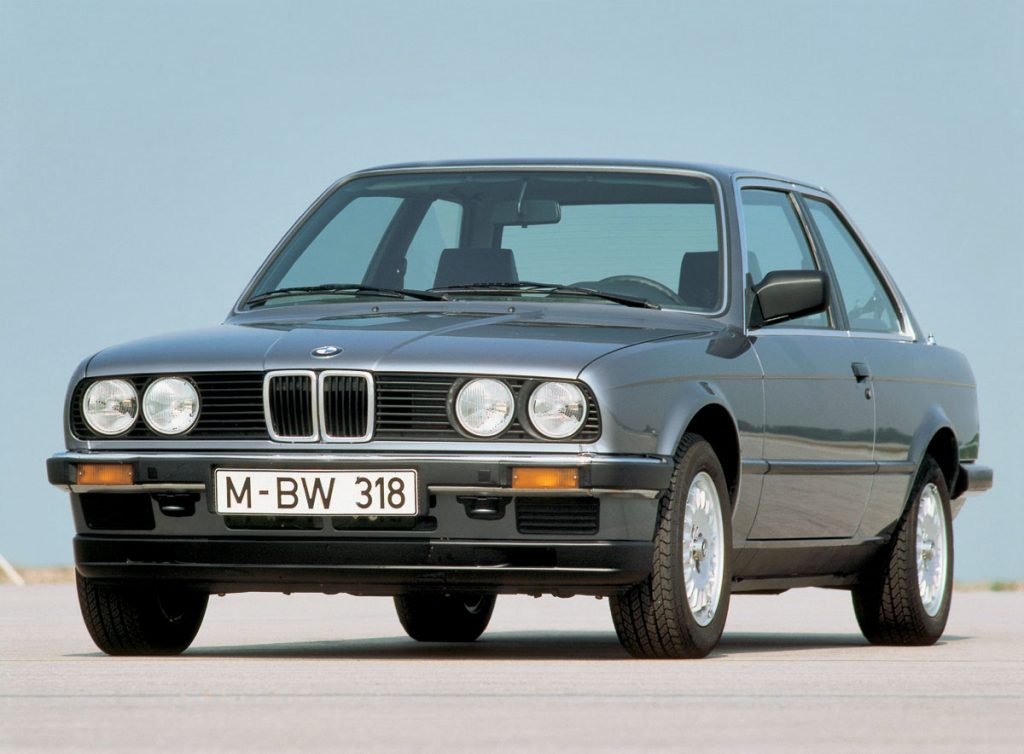
After some time, the conveyor for the production of 323i cars was closed and restructured to produce and sell 325i, with catalysts at 171 hp, without — at 172 hp.
BMW E30 Facelift, 1987
The cars of BMW E30 underwent changes in that year.
- Bumpers were finished with chrome, painted in black shades. Later, they started matching them with paint identical to the bodywork to create a uniform look.
- The rear lights increased in size.
- All steering wheels in the car models, except the 316, were equipped with power steering. Soft accelerator pedals were installed.
Stylish touring models appeared, new light cars. They are also called estates.
In the M3, the exterior was distinguished by:
- Extended fenders;
- Low-profile tires;
- Advanced bumpers;
- Sill skirts;
- Trunk lids, which serve as covers for the rear fenders from above.
The cars participated in the FIA GT racing competitions. Modifications were changing. The cars evolved into three versions. Because they had to comply with the rules set by the FIA.
BMW E30, released in 1986
At that time, they began to develop, launch into production, and sell BMW E30 convertibles. Then the cars of the 320i modification started to appear in early 86. In September, the developers decided that all locks should have central locking. And gradually they began to produce SE:
- Equipped with electrically operated door windows;
- Steering with hydraulic power steering;
- Alloy wheels;
- On-board computers;
- Headlamp washers and wipers;
- Electric sunroof drives and blinds for rear windows;
- Anti-lock braking systems ABS.








After some time, the conveyor for the production of 323i cars was closed and restructured to produce and sell 325i, with catalysts at 171 hp, without — at 172 hp.
BMW E30 Facelift, 1987
The cars of BMW E30 underwent changes in that year.
- Bumpers were finished with chrome, painted in black shades. Later, they started matching them with paint identical to the bodywork to create a uniform look.
- The rear lights increased in size.
- All steering wheels in the car models, except the 316, were equipped with power steering. Soft accelerator pedals were installed.
Stylish touring models appeared, new light cars. They are also called estates.
In the M3, the exterior was distinguished by:
- Extended fenders;
- Low-profile tires;
- Advanced bumpers;
- Sill skirts;
- Trunk lids, which serve as covers for the rear fenders from above.
The cars participated in the FIA GT racing competitions. Modifications were changing. The cars evolved into three versions. Because they had to comply with the rules set by the FIA.
BMW E30, released in 1986
At that time, they began to develop, launch into production, and sell BMW E30 convertibles. Then the cars of the 320i modification started to appear in early 86. In September, the developers decided that all locks should have central locking. And gradually they began to produce SE:
- Equipped with electrically operated door windows;
- Steering with hydraulic power steering;
- Alloy wheels;
- On-board computers;
- Headlamp washers and wipers;
- Electric sunroof drives and blinds for rear windows;
- Anti-lock braking systems ABS.








After some time, the conveyor for the production of 323i cars was closed and restructured to produce and sell 325i, with catalysts at 171 hp, without — at 172 hp.
BMW E30 Facelift, 1987
The cars of BMW E30 underwent changes in that year.
- Bumpers were finished with chrome, painted in black shades. Later, they started matching them with paint identical to the bodywork to create a uniform look.
- The rear lights increased in size.
- All steering wheels in the car models, except the 316, were equipped with power steering. Soft accelerator pedals were installed.
Stylish touring models appeared, new light cars. They are also called estates.
All models of cars were equipped with a five-speed manual gearbox as standard. Optionally, four-speed automatic transmissions were available. The 318i car was released with M18 engines.
BMW E30 cars, production of 1985
During this period, BMW E30 325i cars with six-cylinder engines, 2.5 liters, were released.
- The cars had electronic fuel injection and ignition fully controlled by electronics. The trunk spoilers were painted in body colors.
- The cars were equipped with front lower spoilers.
- The rear seats received improved design.
- The 316 cars operated with five-speed gearboxes.
- In the 320i cars, the main gears with reduced gear ratios started operating.
At the same time, the 325ix cars with all-wheel drive were introduced.





It is said that Audi was involved in this. Because during sports competitions, it won due to all-wheel-drive cars. Besides the sports models, standard cars with such characteristics were also released.
Therefore, BMW had to urgently develop a permanent all-wheel-drive system. Moreover, with torque split control, with a ratio of 37:63% between the front and rear wheels.
The cars with 2.5 liters received such mechanisms.
Later on, the 525ix cars appeared, which were also all-wheel drive. But this was already in 1991.
All-wheel-drive cars were characterized by a high price, so they were not purchased much. Although they had excellent handling characteristics.
In our time, you rarely come across all-wheel-drive estates. Because there were only 7000 units. This is a very small number on a global scale.
Thanks to all-wheel-drive developments, the cars were manufactured with predictable rear-wheel behavior.
Therefore, drivers easily handle the cars on snow or wet roads. The cars easily negotiate turns. Just don't engage in excessive speed. The car can drift and spin.
Such modifications were produced in the E34, E53X5 until the XDrive appeared. The 325ix cars proved to be ordinary, non-racing vehicles. Because the rear suspensions couldn't withstand the loads.
Therefore, in 1985, BMW E30 M3 was introduced.
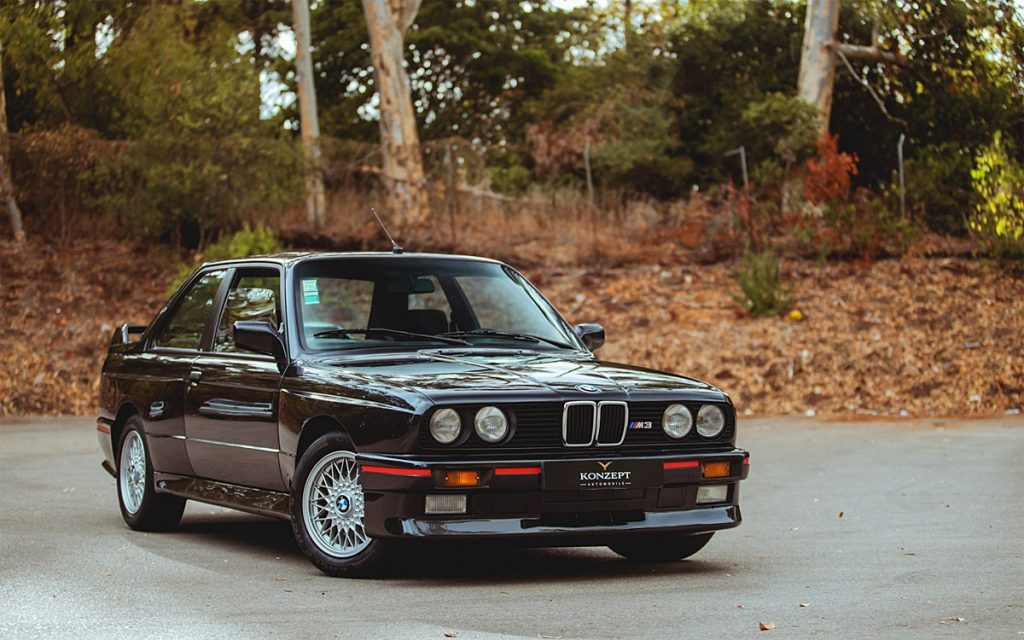




These were very successful cars. They consistently maintain high ratings and are still popular today. Prices can only be compared with new M3s if the car has low mileage and is in excellent condition. This is within the range of $100,000. This is the cost of Evo 1, Evo 2, Evo 3 versions.
The S14 engines were based on production foundations set in the M10, with 200 hp.
With the first releases of 220 hp, Evo I models. In Evo II, 238 hp, 6.8/100 km/h. After them, only sports cars were produced.
In the M3, the exterior was distinguished by:
- Extended fenders;
- Low-profile tires;
- Advanced bumpers;
- Sill skirts;
- Trunk lids, which serve as covers for the rear fenders from above.
The cars participated in the FIA GT racing competitions. Modifications were changing. The cars evolved into three versions. Because they had to comply with the rules set by the FIA.
BMW E30, released in 1986
At that time, they began to develop, launch into production, and sell BMW E30 convertibles. Then the cars of the 320i modification started to appear in early 86. In September, the developers decided that all locks should have central locking. And gradually they began to produce SE:
- Equipped with electrically operated door windows;
- Steering with hydraulic power steering;
- Alloy wheels;
- On-board computers;
- Headlamp washers and wipers;
- Electric sunroof drives and blinds for rear windows;
- Anti-lock braking systems ABS.








After some time, the conveyor for the production of 323i cars was closed and restructured to produce and sell 325i, with catalysts at 171 hp, without — at 172 hp.
BMW E30 Facelift, 1987
The cars of BMW E30 underwent changes in that year.
- Bumpers were finished with chrome, painted in black shades. Later, they started matching them with paint identical to the bodywork to create a uniform look.
- The rear lights increased in size.
- All steering wheels in the car models, except the 316, were equipped with power steering. Soft accelerator pedals were installed.
Stylish touring models appeared, new light cars. They are also called estates.
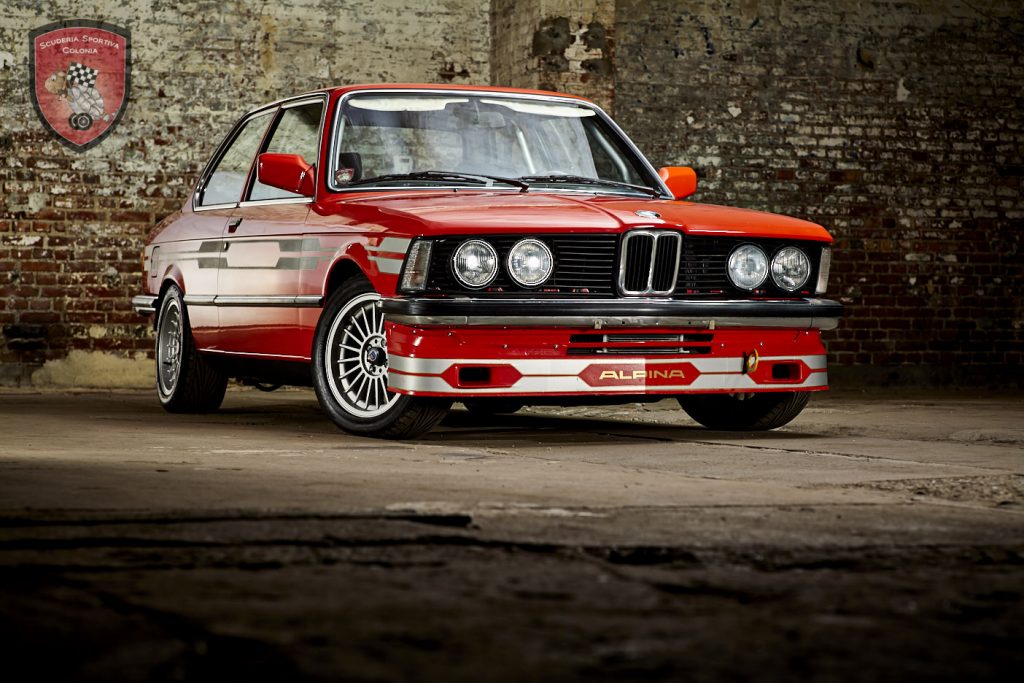



In 1985, such engines were installed in the cars 325i and 325ix. These were injector engines. All cars, except the first models, received ventilated disc brake systems for the front wheels and disc brakes for the rear.
The cars were equipped with fog lights.
Twin exhausts and rigid trunk spoilers. Initially, enthusiasts received two-door sedans.
All models of cars were equipped with a five-speed manual gearbox as standard. Optionally, four-speed automatic transmissions were available. The 318i car was released with M18 engines.
BMW E30 cars, production of 1985
During this period, BMW E30 325i cars with six-cylinder engines, 2.5 liters, were released.
- The cars had electronic fuel injection and ignition fully controlled by electronics. The trunk spoilers were painted in body colors.
- The cars were equipped with front lower spoilers.
- The rear seats received improved design.
- The 316 cars operated with five-speed gearboxes.
- In the 320i cars, the main gears with reduced gear ratios started operating.
At the same time, the 325ix cars with all-wheel drive were introduced.





It is said that Audi was involved in this. Because during sports competitions, it won due to all-wheel-drive cars. Besides the sports models, standard cars with such characteristics were also released.
Therefore, BMW had to urgently develop a permanent all-wheel-drive system. Moreover, with torque split control, with a ratio of 37:63% between the front and rear wheels.
The cars with 2.5 liters received such mechanisms.
Later on, the 525ix cars appeared, which were also all-wheel drive. But this was already in 1991.
All-wheel-drive cars were characterized by a high price, so they were not purchased much. Although they had excellent handling characteristics.
In our time, you rarely come across all-wheel-drive estates. Because there were only 7000 units. This is a very small number on a global scale.
Thanks to all-wheel-drive developments, the cars were manufactured with predictable rear-wheel behavior.
Therefore, drivers easily handle the cars on snow or wet roads. The cars easily negotiate turns. Just don't engage in excessive speed. The car can drift and spin.
Such modifications were produced in the E34, E53X5 until the XDrive appeared. The 325ix cars proved to be ordinary, non-racing vehicles. Because the rear suspensions couldn't withstand the loads.
Therefore, in 1985, BMW E30 M3 was introduced.





These were very successful cars. They consistently maintain high ratings and are still popular today. Prices can only be compared with new M3s if the car has low mileage and is in excellent condition. This is within the range of $100,000. This is the cost of Evo 1, Evo 2, Evo 3 versions.
The S14 engines were based on production foundations set in the M10, with 200 hp.
With the first releases of 220 hp, Evo I models. In Evo II, 238 hp, 6.8/100 km/h. After them, only sports cars were produced.
In the M3, the exterior was distinguished by:
- Extended fenders;
- Low-profile tires;
- Advanced bumpers;
- Sill skirts;
- Trunk lids, which serve as covers for the rear fenders from above.
The cars participated in the FIA GT racing competitions. Modifications were changing. The cars evolved into three versions. Because they had to comply with the rules set by the FIA.
BMW E30, released in 1986
At that time, they began to develop, launch into production, and sell BMW E30 convertibles. Then the cars of the 320i modification started to appear in early 86. In September, the developers decided that all locks should have central locking. And gradually they began to produce SE:
- Equipped with electrically operated door windows;
- Steering with hydraulic power steering;
- Alloy wheels;
- On-board computers;
- Headlamp washers and wipers;
- Electric sunroof drives and blinds for rear windows;
- Anti-lock braking systems ABS.








After some time, the conveyor for the production of 323i cars was closed and restructured to produce and sell 325i, with catalysts at 171 hp, without — at 172 hp.
BMW E30 Facelift, 1987
The cars of BMW E30 underwent changes in that year.
- Bumpers were finished with chrome, painted in black shades. Later, they started matching them with paint identical to the bodywork to create a uniform look.
- The rear lights increased in size.
- All steering wheels in the car models, except the 316, were equipped with power steering. Soft accelerator pedals were installed.
Stylish touring models appeared, new light cars. They are also called estates.
And no one can compare with the facelifted E30 cars. With the «M Technic 2» body kits, there are no time constraints for them.
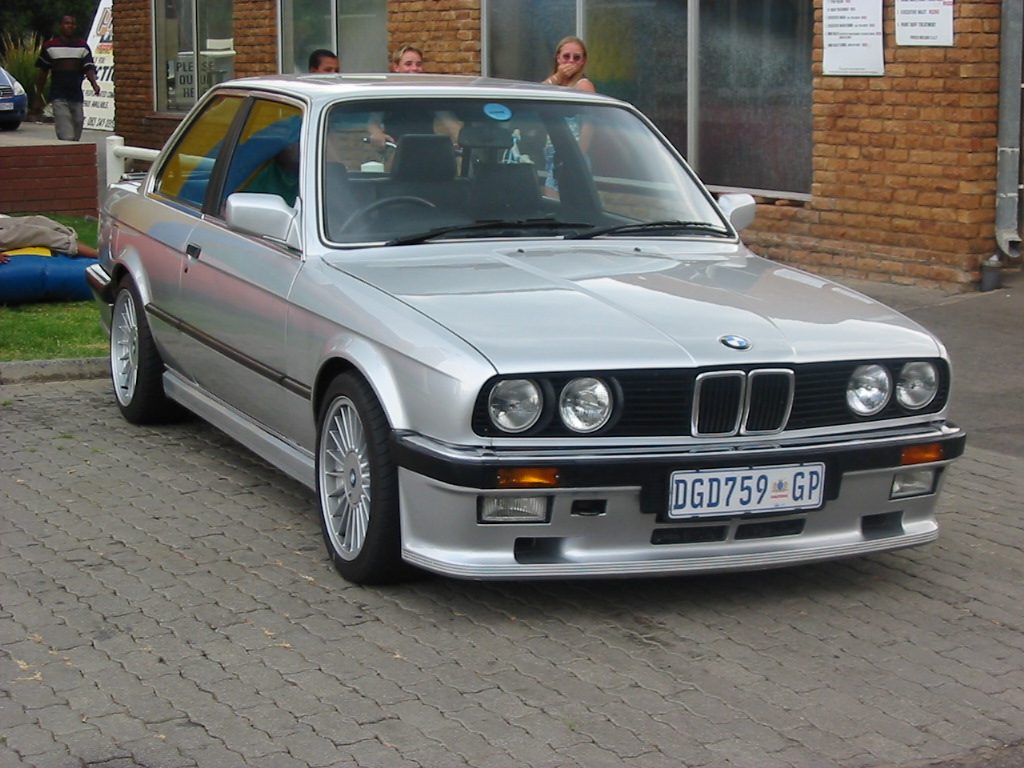


Externally, there is nothing surprising about the cars. Everything is simple.
Cars:
- With modest lines;
- Concise decor;
- Attractive round headlights.
But this modesty is indicative, therefore it exudes not simplicity but rather admiration for BMW's brilliant sporting past.
The interiors are also reminiscent of the 70s.
- The cars are equipped with simple overhanging panels.
- With broad steering wheels.
- There are no adjustments for steering columns. So, you need to adapt to the wheel. The front panels are monumental. There are very few control elements in the form of buttons and keys. But there is one element, very convenient for lighting control. The dashboards are ergonomic and comfortable.
Regarding the width of the cabins, it is comfortable in the front seats. Everything is designed for drivers and front passengers. It is a bit cramped to sit in the rear. These are two-door cars with narrow cabins. Although three passengers can sit, it will be more comfortable for two.
In order to access the rear benches in four-door cars, effort is required due to the narrow door openings. Because to compete with Mercedes-Benz, they made four-door cars with a sedan body in 83, but completely forgot about the doors.
In the BMW E30, updated engines M20 with Jetronic injection systems were installed. Later on, with Motronic. M20 worked with 320i, 323i.




In 1985, such engines were installed in the cars 325i and 325ix. These were injector engines. All cars, except the first models, received ventilated disc brake systems for the front wheels and disc brakes for the rear.
The cars were equipped with fog lights.
Twin exhausts and rigid trunk spoilers. Initially, enthusiasts received two-door sedans.
All models of cars were equipped with a five-speed manual gearbox as standard. Optionally, four-speed automatic transmissions were available. The 318i car was released with M18 engines.
BMW E30 cars, production of 1985
During this period, BMW E30 325i cars with six-cylinder engines, 2.5 liters, were released.
- The cars had electronic fuel injection and ignition fully controlled by electronics. The trunk spoilers were painted in body colors.
- The cars were equipped with front lower spoilers.
- The rear seats received improved design.
- The 316 cars operated with five-speed gearboxes.
- In the 320i cars, the main gears with reduced gear ratios started operating.
At the same time, the 325ix cars with all-wheel drive were introduced.





It is said that Audi was involved in this. Because during sports competitions, it won due to all-wheel-drive cars. Besides the sports models, standard cars with such characteristics were also released.
Therefore, BMW had to urgently develop a permanent all-wheel-drive system. Moreover, with torque split control, with a ratio of 37:63% between the front and rear wheels.
The cars with 2.5 liters received such mechanisms.
Later on, the 525ix cars appeared, which were also all-wheel drive. But this was already in 1991.
All-wheel-drive cars were characterized by a high price, so they were not purchased much. Although they had excellent handling characteristics.
In our time, you rarely come across all-wheel-drive estates. Because there were only 7000 units. This is a very small number on a global scale.
Thanks to all-wheel-drive developments, the cars were manufactured with predictable rear-wheel behavior.
Therefore, drivers easily handle the cars on snow or wet roads. The cars easily negotiate turns. Just don't engage in excessive speed. The car can drift and spin.
Such modifications were produced in the E34, E53X5 until the XDrive appeared. The 325ix cars proved to be ordinary, non-racing vehicles. Because the rear suspensions couldn't withstand the loads.
Therefore, in 1985, BMW E30 M3 was introduced.





These were very successful cars. They consistently maintain high ratings and are still popular today. Prices can only be compared with new M3s if the car has low mileage and is in excellent condition. This is within the range of $100,000. This is the cost of Evo 1, Evo 2, Evo 3 versions.
The S14 engines were based on production foundations set in the M10, with 200 hp.
With the first releases of 220 hp, Evo I models. In Evo II, 238 hp, 6.8/100 km/h. After them, only sports cars were produced.
In the M3, the exterior was distinguished by:
- Extended fenders;
- Low-profile tires;
- Advanced bumpers;
- Sill skirts;
- Trunk lids, which serve as covers for the rear fenders from above.
The cars participated in the FIA GT racing competitions. Modifications were changing. The cars evolved into three versions. Because they had to comply with the rules set by the FIA.
BMW E30, released in 1986
At that time, they began to develop, launch into production, and sell BMW E30 convertibles. Then the cars of the 320i modification started to appear in early 86. In September, the developers decided that all locks should have central locking. And gradually they began to produce SE:
- Equipped with electrically operated door windows;
- Steering with hydraulic power steering;
- Alloy wheels;
- On-board computers;
- Headlamp washers and wipers;
- Electric sunroof drives and blinds for rear windows;
- Anti-lock braking systems ABS.








After some time, the conveyor for the production of 323i cars was closed and restructured to produce and sell 325i, with catalysts at 171 hp, without — at 172 hp.
BMW E30 Facelift, 1987
The cars of BMW E30 underwent changes in that year.
- Bumpers were finished with chrome, painted in black shades. Later, they started matching them with paint identical to the bodywork to create a uniform look.
- The rear lights increased in size.
- All steering wheels in the car models, except the 316, were equipped with power steering. Soft accelerator pedals were installed.
Stylish touring models appeared, new light cars. They are also called estates.
The exterior no longer featured the slanted radiator grilles called the «shark's face». Although such details were installed for 20 years.
For enthusiasts, there was nothing revolutionary about this. Although it made an impression on the adepts. Something new appeared in the E30 bodies, but BMW lost something, according to fans of this brand. Years later, it is now clear that it was their mistake. BMW, on the contrary, became even more popular.
Because BMW E30 bodies are still in demand, even with their respectable age. And all thanks to modern design. They differ from the E28 which still have angular faces.
And no one can compare with the facelifted E30 cars. With the «M Technic 2» body kits, there are no time constraints for them.



Externally, there is nothing surprising about the cars. Everything is simple.
Cars:
- With modest lines;
- Concise decor;
- Attractive round headlights.
But this modesty is indicative, therefore it exudes not simplicity but rather admiration for BMW's brilliant sporting past.
The interiors are also reminiscent of the 70s.
- The cars are equipped with simple overhanging panels.
- With broad steering wheels.
- There are no adjustments for steering columns. So, you need to adapt to the wheel. The front panels are monumental. There are very few control elements in the form of buttons and keys. But there is one element, very convenient for lighting control. The dashboards are ergonomic and comfortable.
Regarding the width of the cabins, it is comfortable in the front seats. Everything is designed for drivers and front passengers. It is a bit cramped to sit in the rear. These are two-door cars with narrow cabins. Although three passengers can sit, it will be more comfortable for two.
In order to access the rear benches in four-door cars, effort is required due to the narrow door openings. Because to compete with Mercedes-Benz, they made four-door cars with a sedan body in 83, but completely forgot about the doors.
In the BMW E30, updated engines M20 with Jetronic injection systems were installed. Later on, with Motronic. M20 worked with 320i, 323i.




In 1985, such engines were installed in the cars 325i and 325ix. These were injector engines. All cars, except the first models, received ventilated disc brake systems for the front wheels and disc brakes for the rear.
The cars were equipped with fog lights.
Twin exhausts and rigid trunk spoilers. Initially, enthusiasts received two-door sedans.
All models of cars were equipped with a five-speed manual gearbox as standard. Optionally, four-speed automatic transmissions were available. The 318i car was released with M18 engines.
BMW E30 cars, production of 1985
During this period, BMW E30 325i cars with six-cylinder engines, 2.5 liters, were released.
- The cars had electronic fuel injection and ignition fully controlled by electronics. The trunk spoilers were painted in body colors.
- The cars were equipped with front lower spoilers.
- The rear seats received improved design.
- The 316 cars operated with five-speed gearboxes.
- In the 320i cars, the main gears with reduced gear ratios started operating.
At the same time, the 325ix cars with all-wheel drive were introduced.





It is said that Audi was involved in this. Because during sports competitions, it won due to all-wheel-drive cars. Besides the sports models, standard cars with such characteristics were also released.
Therefore, BMW had to urgently develop a permanent all-wheel-drive system. Moreover, with torque split control, with a ratio of 37:63% between the front and rear wheels.
The cars with 2.5 liters received such mechanisms.
Later on, the 525ix cars appeared, which were also all-wheel drive. But this was already in 1991.
All-wheel-drive cars were characterized by a high price, so they were not purchased much. Although they had excellent handling characteristics.
In our time, you rarely come across all-wheel-drive estates. Because there were only 7000 units. This is a very small number on a global scale.
Thanks to all-wheel-drive developments, the cars were manufactured with predictable rear-wheel behavior.
Therefore, drivers easily handle the cars on snow or wet roads. The cars easily negotiate turns. Just don't engage in excessive speed. The car can drift and spin.
Such modifications were produced in the E34, E53X5 until the XDrive appeared. The 325ix cars proved to be ordinary, non-racing vehicles. Because the rear suspensions couldn't withstand the loads.
Therefore, in 1985, BMW E30 M3 was introduced.





These were very successful cars. They consistently maintain high ratings and are still popular today. Prices can only be compared with new M3s if the car has low mileage and is in excellent condition. This is within the range of $100,000. This is the cost of Evo 1, Evo 2, Evo 3 versions.
The S14 engines were based on production foundations set in the M10, with 200 hp.
With the first releases of 220 hp, Evo I models. In Evo II, 238 hp, 6.8/100 km/h. After them, only sports cars were produced.
In the M3, the exterior was distinguished by:
- Extended fenders;
- Low-profile tires;
- Advanced bumpers;
- Sill skirts;
- Trunk lids, which serve as covers for the rear fenders from above.
The cars participated in the FIA GT racing competitions. Modifications were changing. The cars evolved into three versions. Because they had to comply with the rules set by the FIA.
BMW E30, released in 1986
At that time, they began to develop, launch into production, and sell BMW E30 convertibles. Then the cars of the 320i modification started to appear in early 86. In September, the developers decided that all locks should have central locking. And gradually they began to produce SE:
- Equipped with electrically operated door windows;
- Steering with hydraulic power steering;
- Alloy wheels;
- On-board computers;
- Headlamp washers and wipers;
- Electric sunroof drives and blinds for rear windows;
- Anti-lock braking systems ABS.








After some time, the conveyor for the production of 323i cars was closed and restructured to produce and sell 325i, with catalysts at 171 hp, without — at 172 hp.
BMW E30 Facelift, 1987
The cars of BMW E30 underwent changes in that year.
- Bumpers were finished with chrome, painted in black shades. Later, they started matching them with paint identical to the bodywork to create a uniform look.
- The rear lights increased in size.
- All steering wheels in the car models, except the 316, were equipped with power steering. Soft accelerator pedals were installed.
Stylish touring models appeared, new light cars. They are also called estates.
